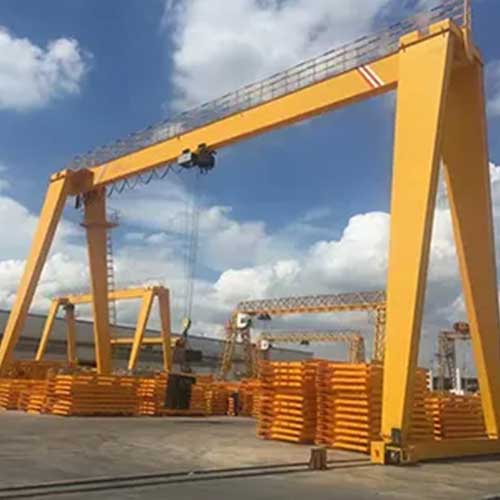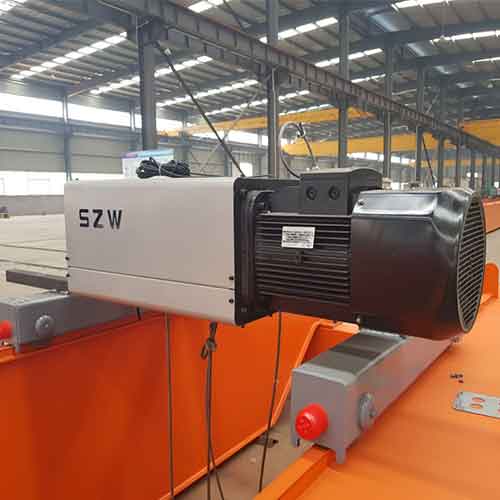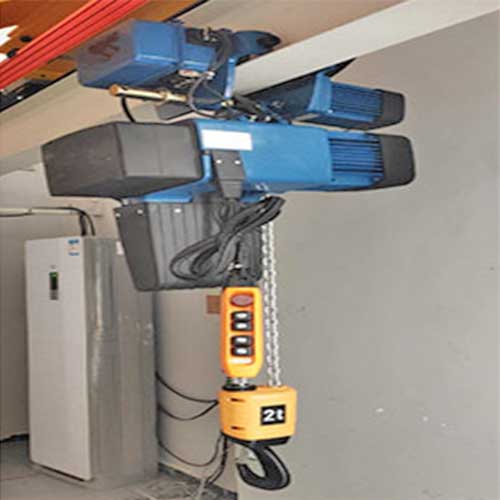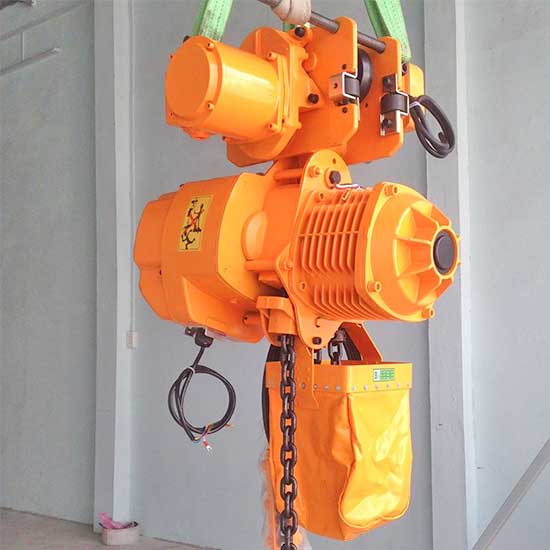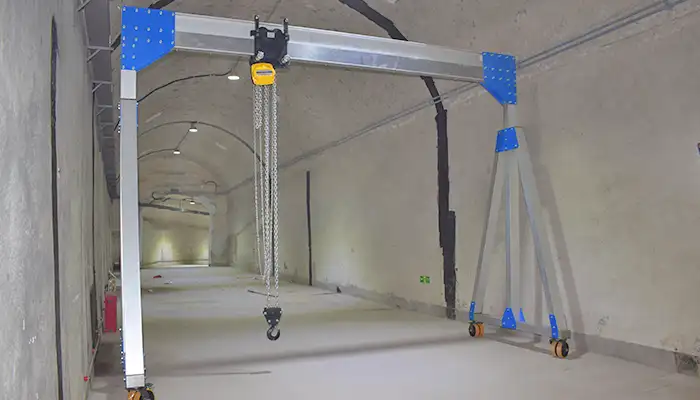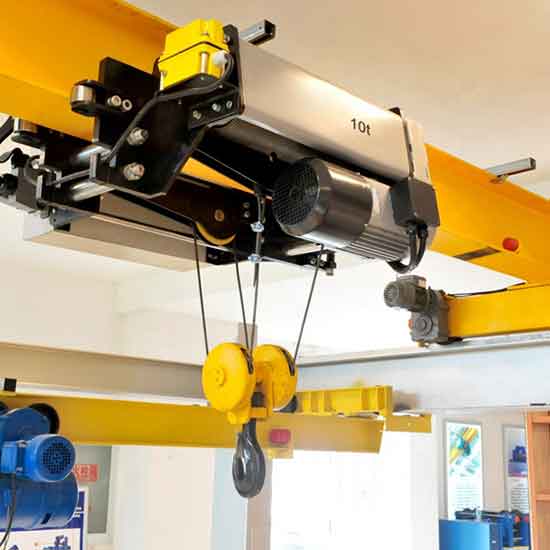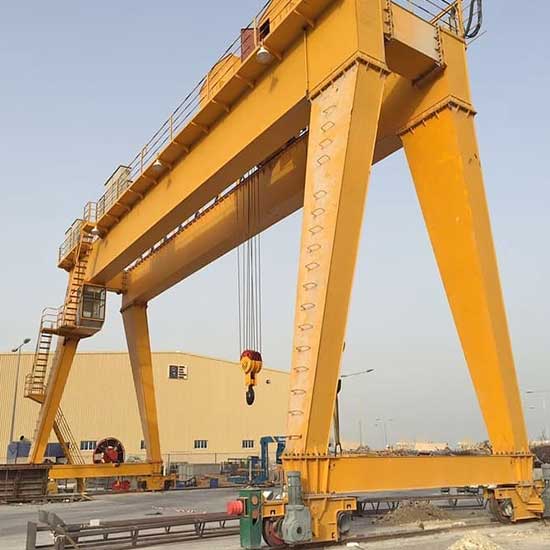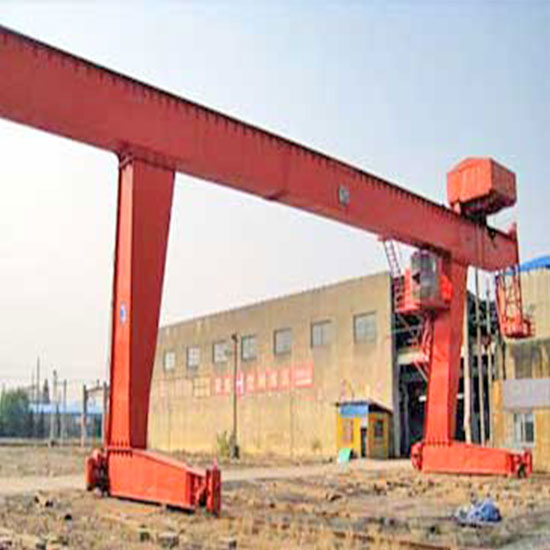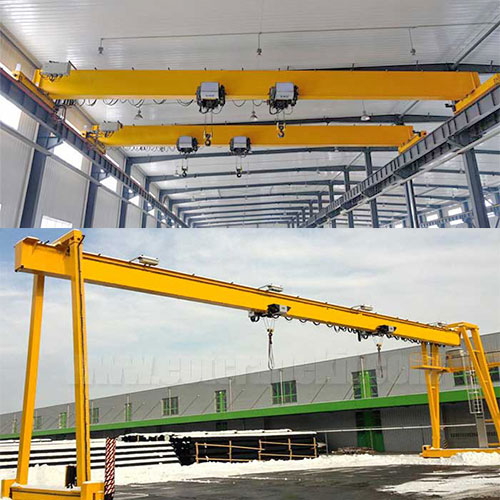Electric Hoist Gantry Crane| Gantry Cranes with Electric Hoists
Electric hoist gantry crane for sale. Types of gantry cranes with electric hoists for indoor and outdoor material handling for general & hazardous use.
Category: Overhead Hoist
Your Trusted Electric Hoist Gantry Cranes Manufacturer & Supplier
Electric Hoist Gantry Crane, Custom Gantry Cranes with Electric Hoists
Hot Sale A Frame Gantry1 Ton to 20 Ton & Electric Golith Gantry Cranes 3 Ton to 500 Ton for Your Needs
Electric Hoist Gantry Cranes, Custom Gantry Crane with Electirc Hoists
Industrial operations demand precision and efficiency, and at the heart of seamless material handling lies the electric hoist gantry crane. In this comprehensive guide, we delve into the world of gantry cranes equipped with electric hoists, exploring their various types, applications, and considerations for both buyers and users across diverse industries.
Electric hoist gantry cranes are versatile material handling solutions designed for both indoor and outdoor use. These cranes consist of a framework supporting a horizontal beam (single or double girder), beneath which an electric hoist is mounte This design allows for the lifting and movement of heavy loads with high precision.
Types of Gantry Cranes with Electric Hoists
In the field of electric hoist gantry cranes, the single girder configuration stands out as a versatile and widely utilized material handling solution.
Single Girder Gantry Cranes
Single girder gantry cranes are characterized by a singular horizontal beam that spans the width of the crane. This design ensures a lightweight and cost effective solution without compromising on strength. The bridge, or girder, is typically supported by two legs on either side, forming a stable structure for lifting operations.
The simplicity of the design allows for easy installation and maintenance, making single girder gantry cranes a popular choice across various industries. The modular nature of these cranes enables customization to suit specific workspace dimensions and lifting requirements.
The functionality of single girder gantry cranes is marked by efficiency and precision. The electric hoist, mounted on the girder, operates seamlessly along the beam, providing optimal control during lifting, lowering, and horizontal movements.
These cranes are well suited for moderate lifting capacities, making them ideal for tasks where a balance between cost and performance is crucial. The single girder design facilitates swift and precise material handling within confined spaces, enhancing overall operational efficiency.
Applications
Single girder gantry cranes find applications across a spectrum of industries. Their adaptability makes them particularly well suited for:
Workshops: Ideal for lifting and moving components during manufacturing processes.
Warehouses: Efficiently handles loading and unloading tasks, optimizing storage operations.
Processing Lines: Supports the smooth flow of materials in assembly and production lines.
Types of Single Girder Gantry Cranes with Electric Hoists

A Frame Single Girder Gantry Crane with Wire Rope Electric Hoists
Gantry Crane Type: A Frame Single Girder Gantry Crane
Gantry Hoist Type: Wire Rope Electric Hoists
Typical Loads: General material handling, medium to heavy-duty lifting tasks
Crane Applications: Workshops, warehouses, construction sites
Specific Tonnages: Handling loads from 1 to 20 tons

A Frame Single Girder Gantry Crane with Electric Hoists with Chain Falls
Gantry Crane Type: A Frame Single Girder Gantry Crane
Gantry Hoist Type: Electric Hoists with Chain Falls
Typical Loads: Heavy and bulky materials, machinery components
Crane Applications: Manufacturing plants, steel fabrication facilities
Specific Tonnages: Handling loads from 10 to 20 tons

A Frame Single Girder Gantry Crane with Double Electric Hoists
Gantry Crane Type: A Frame Single Girder Gantry Crane
Gantry Hoist Type: Double Electric Hoists
Typical Loads: Dual-load handling, tandem lifting, material transfer operations
Crane Applications: Manufacturing facilities, processing plants, assembly lines
Specific Tonnages: Handling loads from 1 to 20 tons

Single Leg Single Girder Gantry Crane with Electric Hoists with Chain Falls
Gantry Crane Type: Single Leg Single Girder Gantry Crane
Gantry Hoist Type: Electric Hoists with Chain Falls
Typical Loads: Heavy and bulky materials, machinery components
Crane Applications: workshop, warehouse , outdoor yards, storage facilities
Specific Tonnages: Handling loads from 1 to 20 tons

L Leg Single Girder Gantry Crane with Electric Crab Hoist
Gantry Crane Type: L Leg Single Girder Gantry Crane
Gantry Hoist Type: Crab Trolley Electric Hoist
Typical Loads: Heavy-duty lifting, precise positioning, tandem handling
Crane Applications: Shipbuilding yards, heavy machinery manufacturing, aerospace industry
Specific Tonnages: Handling loads from 3 to 80 tons

L Leg Single Girder Gantry Crane with Double Electric Hoists
Gantry Crane Type: L Leg Single Girder Gantry Crane
Gantry Hoist Type: Double Electric Hoists
Typical Loads: Dual-load handling, tandem lifting, material transfer operations
Crane Applications: Manufacturing facilities, processing plants, assembly lines
Specific Tonnages: Handling loads from 1 to 20 tons
Each type of gantry crane with electric hoists serves specific purposes and caters to different industries and applications, offering versatility, efficiency, and reliability in material handling operations.
Double Girder Gantry Cranes
Double girder gantry cranes is designed with two horizontal beams or girders, which are widely used for application where high frequency of heavy loads handling are required, or large span are required. The increased height and additional girder provide enhanced stability and strength, making these gantry cranes suitable for handling heavier loads.
The robust design of double girder gantry cranes allows for greater lifting heights and capacities compared to their single girder counterparts. The legs supporting the girders are often placed wider apart, offering a solid foundation for heavy duty lifting operations.
The functionality of double girder gantry cranes revolves around their ability to handle substantial loads with precision and control. The electric hoists, mounted between the girders, deliver powerful and efficient lifting, lowering, and horizontal movement capabilities.
These cranes excel in applications demanding high speed and high capacity material handling. The dual girder arrangement enhances stability, reducing the risk of sway during heavy lifts. This makes double girder gantry cranes a preferred choice for industries requiring a robust solution for complex lifting tasks.
Applications
Double girder gantry cranes find their niche in industries where heavy and bulky loads are a norm.
Key applications include:
Steel Mills: Efficiently handles large steel coils and raw materials.
Shipbuilding Yards: Lifts and positions heavy ship components with precision.
Manufacturing Facilities: Ideal for tasks involving the movement of substantial machinery and equipment.
The versatility and strength of double girder gantry cranes make them indispensable in scenarios demanding superior lifting capabilities. In the subsequent section, we will explore the realm of portable gantry cranes, shedding light on their unique attributes and applications. Join us as we uncover the mobility and flexibility these cranes bring to various work environments.
Types of Double Girder Gantry Cranes with Electric Hoists

A Frame Double Girder Gantry Crane with Wire Rope Electric Hoists
Gantry Crane Type: A Frame Double Girder Gantry Crane
Gantry Hoist Type: Wire Rope Electric Hoists
Typical Loads: Heavy materials, machinery, and large components
Crane Applications: Industrial facilities, construction sites, and manufacturing plants
Specific Tonnages: Handling loads from 3 to 80 tons

A Frame Double Girder Gantry Crane with Electric Hoists
Gantry Crane Type: A Frame Double Girder Gantry Crane
Gantry Hoist Type: Electric Hoists with Chain Falls or wirw rope hoist
Typical Loads: Heavy-duty materials, steel structures, and construction equipment
Crane Applications: Shipping yards, steel mills, and heavy manufacturing industries
Specific Tonnages: Handling loads from 3 to 50 tons

A Frame Double Girder Gantry Crane with Double Electric Hoists
Gantry Crane Type: A Frame Double Girder Gantry Crane
Gantry Hoist Type: Double Electric Hoists
Typical Loads: Dual-load handling, tandem lifting, and large-scale material transfer operations
Crane Applications: Shipbuilding, container handling, and heavy machinery assembly
Specific Tonnages: Handling loads from 3 to 80 tons

Double Girder Gantry Crane with Builtup Hoist
Gantry Crane Type: Double Girder Gantry Crane
Gantry Hoist Type: Builtup Hoist
Typical Loads: Heavy machinery, industrial equipment, and structural components
Crane Applications: Manufacturing facilities, foundries, and steel fabrication shops
Specific Tonnages: Handling loads from 3 to 500 tons

Double Cantilever Gantry Crane with Electric Hoist
Gantry Crane Type: Double Cantilever Gantry Crane
Gantry Hoist Type: Electric Hoist
Typical Loads: Long and bulky materials, such as timber, pipes, and structural beams
Crane Applications: Lumber yards, metal stockyards, and construction material storage areas
Specific Tonnages: Handling loads from 3 to 80 tons

Single Cantilever Gantry Crane with Electric Hoist
Gantry Crane Type: Single Cantilever Gantry Crane
Gantry Hoist Type: Electric Hoist
Typical Loads: Light to medium-duty materials, such as prefabricated components and machinery parts
Crane Applications: Workshops, maintenance facilities, and small-scale manufacturing operations
Specific Tonnages: Handling loads from 3 to 80 tons
Portable Gantry Cranes with Electric Hoists
Portable gantry cranes are characterized by their mobility and ease of relocation. The design typically features a lightweight, yet robust, frame supported by A shaped legs. The portability is further enhanced by the absence of a permanent installation, allowing these cranes to be easily assembled and disassembled as neede
Their modular structure often includes locking casters, facilitating effortless movement around a workspace. The portable nature of these gantry cranes makes them adaptable to changing operational needs and dynamic work environments.
The functionality of portable gantry cranes is centered around their ability to provide on the go lifting solutions. Equipped with electric hoists, these cranes offer the same precision and control as their stationary counterparts. The hoists can be easily adjusted for various lifting heights and load capacities.
Designed for quick setup, these cranes are suitable for tasks that require frequent changes in location. The electric hoists provide efficient material handling capabilities, making portable gantry cranes a valuable asset in dynamic work environments.
Applications
Portable gantry cranes shine in scenarios where flexibility and mobility are paramount.
Key applications include:
- Field Operations: Ideal for construction sites, where the crane can be easily moved to different locations.
- Maintenance and Repair: Well suited for workshops requiring versatile lifting solutions for equipment and machinery.
- Temporary Workstations: Provides a flexible lifting solution in areas where a permanent crane installation is impractical.
The versatility and mobility of portable gantry cranes make them indispensable in environments where adaptability is key. In our next segment, we will explore semi gantry cranes, uncovering their unique features and applications in various industries. Join us as we delve into the synergy of efficiency and flexibility these cranes bring to the table.
Types of Portable Gantry Cranes with Electric Hoists

Fixed height portable gantry crane with electric chain hoist

Portable Gantry Cranes with wire rope hoist

Mobile gantry crane with low headroom hoist and adjustable gantry design

Lightweighted aluminum gantry crane with chain hoist

Aluminum gantry crane with adjustable gantry crane

Folding gantry crane with manual chain hoist
Semi Gantry Cranes with Electric Hoists
Our exploration of electric hoist gantry cranes takes us to the realm of semi gantry cranes—a harmonious blend of efficiency and adaptability. Let's delve into the design, functionality, and versatile applications that make these cranes an asset in various industrial settings.
Semi gantry cranes present a unique design featuring a single girder that runs along a runway on one side, while the other end is supported by legs or a wall mounted structure. This asymmetrical configuration provides stability and strength while allowing for optimal use of space.
The design often incorporates a combination of wheels and end trucks, allowing the crane to move along the runway. Semi gantry cranes are an excellent choice for facilities where one side of the workspace requires lifting capabilities, and the other side needs unobstructed access.
The functionality of semi gantry cranes revolves around their ability to offer efficient material handling on one side, leaving the other side of the workspace accessible for other operations. The electric hoists, mounted on the single girder, provide precise control during lifting, lowering, and horizontal movements.
These cranes are particularly suitable for tasks requiring lateral movement along a fixed path. The flexibility to move along the runway ensures optimal use of space without compromising on lifting capabilities.
Applications
Semi gantry cranes find their niche in applications where one side of the workspace needs dedicated lifting capabilities, and the other side requires unimpeded access. Key applications include:
- Loading Docks: Efficiently handles loading and unloading operations on one side while keeping the other side clear for transport vehicles.
- Storage Facilities: Provides targeted lifting solutions for specific storage areas while maintaining open access in other parts of the facility.
- Assembly Lines: Offers precise material handling capabilities without obstructing the movement of products on the assembly line.
The strategic design of semi gantry cranes makes them a valuable asset in scenarios where space optimization is crucial. In our journey through the diverse landscape of electric hoist gantry cranes, the next stop will be an exploration of their applications in indoor settings, including workshops, warehouses, and processing lines. Join us as we unravel the nuances of these cranes in enhancing efficiency within confined spaces.
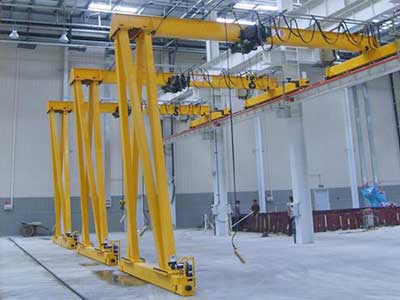
Single Girder Semi Gantry Crane with Wire Rope Hoist
Gantry Crane Type: Single Girder Semi Gantry Crane
Gantry Hoist Type: Wire Rope Hoist
Typical Loads: Medium to heavy materials, machinery components, and industrial equipment
Crane Applications: Warehouses, workshops, and manufacturing facilities with limited space or uneven floors
Specific Tonnages: Handling loads from 1 to 20 tons

Double Girder Semi Gantry Crane with Crab Trolley Hoist
Gantry Crane Type: Double Girder Semi Gantry Crane
Gantry Hoist Type: Crab Trolley Hoist
Typical Loads: Heavy and oversized materials, structural steel, and large machinery
Crane Applications: Construction sites, shipyards, and heavy manufacturing industries
Specific Tonnages: Handling loads from 3 to 80 tons

Semi Gantry Crane with Double Hoists
Gantry Crane Type: Semi Gantry Crane
Gantry Hoist Type: Double Hoists
Typical Loads: Dual-load handling, tandem lifting, and versatile material transfer operations
Crane Applications: Assembly lines, processing plants, and logistics centers requiring flexible lifting solutions
Specific Tonnages: Handling loads from 3 to 80 tons
Truss Girder Gantry Cranes with Electric Hoists
Our exploration of electric hoist gantry cranes now takes us to the specialized world of Truss Girder Gantry Cranes. Let's delve into the design, functionality, and applications that make these cranes an exceptional choice, particularly in scenarios demanding extended spans and robust construction.
Truss girder gantry cranes distinguish themselves through a unique design featuring truss shaped girders. The truss structure comprises interconnected beams, providing superior strength and stability. This design allows for significant spans, making truss girder gantry cranes particularly suitable for outdoor applications and scenarios where an extended reach is essential.
The truss design significantly reduces the weight of the crane while maintaining structural integrity, making it an efficient choice for handling heavy loads over large areas.
The functionality of truss girder gantry cranes revolves around their ability to provide a robust and stable lifting solution, especially over expansive spaces. The electric hoists, mounted on the truss girders, deliver precise control during lifting, lowering, and horizontal movements.
These cranes excel in scenarios where a long span is crucial, such as outdoor yards, storage areas, or construction sites. The truss design ensures minimal deflection, allowing for accurate and controlled material handling even over extended distances.
Applications
Truss girder gantry cranes find their niche in applications demanding both strength and reach. Key applications include:
- Outdoor Yards: Efficiently handles heavy loads in outdoor storage or processing yards.
- Construction Sites: Provides a reliable lifting solution for construction materials and components.
- Assembly Yards: Supports the assembly of large structures or equipment in open spaces.
The truss girder gantry crane's ability to combine strength with extended spans makes it an invaluable asset in scenarios where traditional gantry cranes may fall short. In the upcoming section, we will explore how electric hoist gantry cranes seamlessly integrate into indoor environments, offering tailored solutions for workshops, warehouses, and processing lines. Join us as we unravel the adaptability and precision these cranes bring to confined spaces.

Single Girder Truss Gantry Crane with Electric Hoist
Gantry Crane Type: Single Girder Truss Gantry Crane
Gantry Hoist Type: Electric Hoist
Typical Loads: Medium to heavy materials, construction components, and machinery parts
Crane Applications: Construction sites, outdoor storage yards, and assembly areas with limited headroom
Specific Tonnages: Handling loads from 3 to 20 tons

Double Girder Truss Gantry Crane with Electric Hoist
Gantry Crane Type: Double Girder Truss Gantry Crane
Gantry Hoist Type: Electric Hoist
Typical Loads: Heavy-duty materials, large machinery, and structural components
Crane Applications: Industrial plants, steel mills, and heavy manufacturing facilities requiring high lifting capacities
Specific Tonnages: Handling loads from 3 to 80 tons

Double Hoist Truss Gantry Cranes
Gantry Crane Type: Double Hoist Truss Gantry Crane
Gantry Hoist Type: Double Electric Hoists
Typical Loads: Dual-load handling, tandem lifting, and simultaneous material transfer operations
Crane Applications: Ports, shipyards, and logistics centers handling multiple loads simultaneously
Specific Tonnages: Handling loads from 3 to 80 tons
Electric Hoists for Gantry Cranes
As we continue our journey through the intricacies of electric hoist gantry cranes, our focus now shifts to the beating heart of these machines—the electric hoists. Let's explore the two primary types, wire rope hoists and chain hoists, understanding their unique attributes and applications.
Wire Rope Hoists
Wire rope hoists are a fundamental component of gantry cranes, offering exceptional strength and durability. The design involves a drum around which a wire rope is woun The lifting hook or attachment is connected to the wire rope, enabling the hoist to lift and lower heavy loads with precision.
Key Features:
High Capacity: Wire rope hoists are capable of handling substantial loads, making them ideal for heavy duty applications.
Extended Reach: The length of the wire rope allows for significant lifting heights, providing versatility in material handling.
Smooth Operation: The winding and unwinding of the wire rope contribute to smooth and controlled lifting and lowering movements.
Applications:
Manufacturing: Suitable for lifting heavy machinery and components during production processes.
Construction: Effective in hoisting large construction materials and structural components.
Warehousing: Ideal for handling heavy loads during loading and unloading operations.
Chain Hoists
Chain hoists are another prevalent type of electric hoist, known for their simplicity and reliability. These hoists utilize a chain looped around a set of pulleys to lift and lower loads. The lifting hook or attachment is connected to the chain, providing a straightforward yet effective mechanism.
Key Features:
Compact Design: Chain hoists are often more compact, making them suitable for applications with space constraints.
Precise Positioning: The chain allows for precise control over the height and positioning of the lifted loa
Ease of Maintenance: Simple design contributes to easy maintenance and repairs.
Applications:
Workshops: Well suited for tasks involving the lifting and positioning of components.
Maintenance and Repair: Ideal for lifting equipment during maintenance operations.
Assembly Lines: Provides controlled lifting for the assembly of products and machinery.
Choosing between wire rope hoists and chain hoists depends on the specific requirements of the application, including load capacity, lifting height, and operational preferences. In the next segment, we will delve into the various design features and functionalities of electric hoists, offering insights into their integration with different types of gantry cranes. Join us as we explore the nuanced world of hoisting mechanisms that power the efficiency of gantry crane operations.
Hoist Designs and Features
Speed and Capacity
- Speed: The speed of an electric hoist is a crucial consideration, impacting the efficiency of material handling operations. Variable speed controls allow for precise adjustments, ensuring optimal performance based on the load and specific requirements of the task. High speed hoists are valuable for swift vertical movement, while slower speeds may be preferred for delicate or intricate lifting tasks.
- Capacity: The lifting capacity of an electric hoist determines its suitability for various applications. Hoists come in a range of capacities, from light duty for smaller loads to heavy duty for substantial weights. Understanding the load requirements of your operations is essential for selecting the right hoist capacity, ensuring both safety and efficiency.
Hoist Control Systems
- Pendant Control: Many electric hoists come equipped with pendant controls, allowing operators to manage the hoisting process manually. Pendant controls are user friendly and provide a tactile interface for precise maneuvering. This type of control is often preferred in scenarios where direct operator intervention is necessary.
- Remote Control: Modern electric hoists may feature remote control systems, offering enhanced flexibility and safety. Remote controls enable operators to manage the hoisting process from a distance, providing a clear vantage point and reducing the risk of accidents. This feature is particularly valuable in applications where the operator needs to maintain a safe distance from the loa
Safety Features
- Overload Protection: Overload protection mechanisms are integral to electric hoists, preventing damage to the hoist and ensuring the safety of both personnel and equipment. These features automatically detect when the load approaches or exceeds the hoist's rated capacity, prompting the system to stop or alert the operator.
- Emergency Stop: Emergency stop buttons are strategically placed on hoist controls to immediately halt operations in case of unforeseen circumstances or safety concerns. This rapid response mechanism is critical for preventing accidents and minimizing damage.
- Limit Switches: Limit switches act as safety measures, preventing the hoist from over traveling in both upward and downward directions. These switches ensure that the hoist stops at predetermined positions, enhancing precision and safeguarding against potential mishaps.
Integration with Gantry Crane Systems
The seamless integration of electric hoists with gantry crane systems is essential for ensuring optimal performance and efficiency in material handling operations.
- Structural Compatibility: Electric hoists are designed to seamlessly integrate with different types of gantry cranes, including single and double girder configurations. Proper alignment and attachment ensure stability and load bearing capacity.
- Power Supply and Control Panel Integration: Gantry crane systems are equipped with power supplies and control panels that integrate with electric hoists. Ensuring compatibility between these components is crucial for synchronized and efficient crane operations.
- Safety Interlocks: Intelligent safety interlocks connect the electric hoist with the gantry crane's control system. These interlocks ensure that the hoist operates within specified parameters and coordinates with other safety features of the crane system.
The delicted electric hoist designs, features, and integration aspects of electric hoists is pivotal in selecting the right system for your specific industrial needs. In the upcoming segment, we will explore the myriad applications of electric hoist gantry cranes in both indoor and outdoor settings, providing practical insights for various industries. Join us as we unveil the real world impact of these versatile material handling solutions.
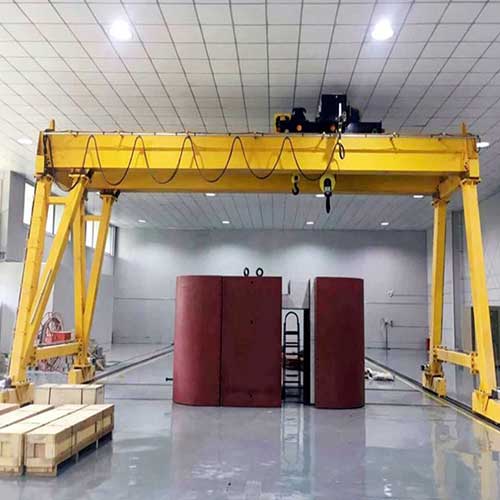
Indoor Applications of Electric Hoist Gantry Cranes
As we transition into exploring the practical applications of indoor electric hoist gantry cranes, our focus turns to their role in enhancing efficiency within various indoor settings. Let's uncover the advantages and nuances of utilizing these cranes in workshops, warehouses, processing lines, and other indoor facilities.
Workshops
Electric hoist gantry cranes are indispensable in workshops, where precision and flexibility are paramount. These cranes facilitate:
Machinery Handling: Efficiently lifts, positions, and relocates heavy machinery during installation or maintenance.
Component Assembly: Supports the assembly process by precisely placing components in the desired position.
Material Transport: Streamlines the movement of materials within the workshop, reducing manual handling and enhancing overall workflow.
Warehouses
In the field of warehousing, electric hoist gantry cranes prove invaluable for:
Inventory Management: Enables swift and precise stacking and retrieval of goods on shelves or racks.
Loading and Unloading: Optimizes loading and unloading operations, minimizing downtime and maximizing throughput.
Pallet Handling: Facilitates the movement of palletized goods, enhancing the efficiency of storage operations.
Processing Lines
Electric hoist gantry cranes play a pivotal role in processing lines, contributing to:
Material Flow: Ensures a smooth flow of materials along the production line, reducing bottlenecks.
Product Handling: Lifts and positions products at different stages of processing, enhancing automation and reducing manual labor.
Tool and Die Handling: Assists in handling heavy tooling and dies, ensuring seamless integration with manufacturing processes.
Other Indoor Facilities
Beyond workshops, warehouses, and processing lines, electric hoist gantry cranes find applications in a variety of indoor facilities, including:
Maintenance Facilities: Supports maintenance operations by lifting and positioning equipment for repairs.
Research and Development Labs: Facilitates handling of experimental setups and heavy research equipment.
Automotive Workshops: Aids in the assembly and maintenance of vehicles, ensuring efficient material handling.
Typical Object Handling
Electric hoist gantry cranes excel in handling a diverse range of objects, including:
Heavy Machinery: Efficiently lifts and moves machinery components, ensuring precision in positioning.
Raw Materials: Transports raw materials to and from different workstations, contributing to streamlined manufacturing processes.
Finished Products: Supports the movement and packaging of finished products, enhancing overall production efficiency.
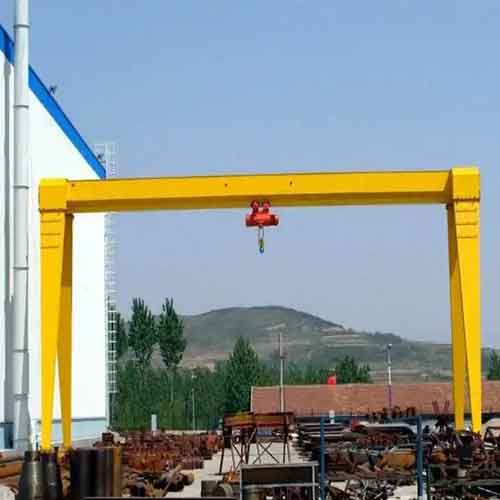
Outdoor Applications of Electric Hoist Gantry Cranes
As we step into the expansive world of outdoor applications, outdoor electric hoist gantry cranes showcase their adaptability and robust performance. Let's explore how these cranes excel in outdoor yards, storage yards, processing yards, assembly yards, building sites, and their ability to weather the elements.
Outdoor Yards
Electric hoist gantry cranes find versatile applications in outdoor yards by:
Handling Bulky Materials: Efficiently lifting and moving heavy and bulky materials within the yar
Loading and Unloading Trucks: Streamlining the loading and unloading of goods from trucks for transport.
Yard Management: Contributing to efficient yard organization by precisely placing materials in designated areas.
Storage Yards
In outdoor storage yards, electric hoist gantry cranes enhance operations by:
High Stacking Capability: Facilitating the stacking of materials to maximize vertical storage space.
Quick Retrieval: Enabling the swift retrieval of goods for distribution or further processing.
Adaptable Placement: Easily moving and positioning stored items, optimizing storage capacity.
Processing Yards
Electric hoist gantry cranes in processing yards are instrumental in:
Raw Material Handling: Transporting raw materials from storage areas to processing stations.
Intermediary Product Movement: Supporting the movement of products between different processing stages.
Final Product Handling: Lifting and relocating finished products for packaging or distribution.
Assembly Yards
Assembly yards benefit from electric hoist gantry cranes by:
Component Handling: Assisting in the assembly of large structures by lifting and placing components.
Workflow Optimization: Enhancing the efficiency of assembly operations by providing precise material handling.
Adaptability: Easily repositioning to accommodate changes in assembly configurations.
Building Sites
At construction and building sites, electric hoist gantry cranes play a vital role in:
Material Erection: Lifting and positioning construction materials during building erection.
Equipment Handling: Assisting in the placement of heavy equipment and machinery.
Demolition Operations: Facilitating the removal of debris and materials during demolition.
Adapting to Weather Conditions
Electric hoist gantry cranes are engineered to adapt to various weather conditions, ensuring:
Weather Resistant Components: The use of materials and coatings that withstand exposure to rain, sun, and win
Temperature Tolerance: Operating efficiently in both hot and cold climates, maintaining performance reliability.
Safety Protocols: Incorporating safety features to account for weather related challenges, such as wind sway prevention.
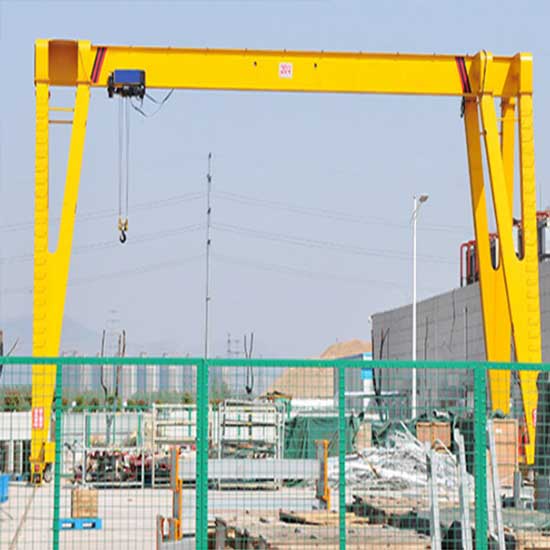
General Material Handling with Electric Hoist Gantry Cranes
Electric hoist gantry cranes are unsung heroes In the field of material handling, seamlessly orchestrating tasks like loading, unloading, assembly, disassembly, and transportation within facilities. Let's delve into the nuanced ways these cranes elevate efficiency in diverse material handling scenarios.
Loading and Unloading
Efficiency at Every Turn:
Electric hoist gantry cranes revolutionize the loading and unloading process by:
Swift Operation: Facilitating rapid loading and unloading of goods, minimizing downtime.
Precise Positioning: Ensuring accuracy in placing materials or products within transport vehicles or storage areas.
Flexibility: Adapting to different load sizes and shapes with ease, enhancing versatility in material handling.
Assembly and Disassembly
Building Blocks of Efficiency:
In assembly and disassembly operations, electric hoist gantry cranes shine by:
Component Handling: Lifting and positioning components for seamless assembly.
Precision Movements: Facilitating intricate assembly processes with controlled lifting and lowering.
Efficient Disassembly: Streamlining the disassembly of machinery or structures with accurate material handling.
Transportation within Facilities
Navigating the Facility Landscape:
Electric hoist gantry cranes contribute significantly to the internal transportation of materials by:
Point to Point Movements: Transporting materials precisely from one location to another within a facility.
Optimized Routes: Creating efficient pathways for material flow, reducing congestion and delays.
Minimized Manual Handling: Reducing the need for manual transportation, minimizing the risk of injuries.
Role in Production Processes
Seamless Integration into Production:
Electric hoist gantry cranes play a pivotal role in production processes by:
Raw Material Handling: Transporting raw materials to production lines with precision.
Intermediate Product Movement: Facilitating the movement of products between different stages of production.
Finished Product Handling: Lifting and relocating finished products for packaging or distribution.

Hazardous Material Handling
Handling hazardous materials demands a heightened level of caution and precision. Explosion Proof Electric hoist gantry cranes, with their versatility and safety features, provide a reliable solution. Let's explore the safety measures, specialized gantry cranes, and compliance considerations that ensure secure handling in hazardous environments.
Safety Measures for Hazardous Materials
Environmental Controls:
Implementing environmental controls is essential when handling hazardous materials. Electric hoist gantry cranes contribute to safety through:
Enclosed Systems: Deploying enclosed hoisting systems to prevent the escape of hazardous materials into the environment.
Ventilation: Ensuring adequate ventilation in the handling area to disperse potentially harmful fumes or gases.
Operator Safety:
Prioritizing operator safety is crucial, and electric hoist gantry cranes do so by:
Remote Operation: Allowing operators to control the crane from a safe distance, reducing direct exposure to hazardous materials.
Personal Protective Equipment (PPE): Mandating the use of appropriate PPE, such as respiratory protection and safety suits, for operators.
Specialized Gantry Cranes for Hazardous Environments
Explosion Proof Gantry Cranes:
In environments with explosive or flammable materials, explosion proof gantry cranes are designed with:
Enclosed Components: All critical components, such as motors and electrical systems, are enclosed to prevent sparks or heat generation.
Non Sparking Materials: Constructed using non sparking materials to eliminate the risk of ignition.
Corrosion Resistant Gantry Cranes:
For handling corrosive materials, specialized gantry cranes feature:
Corrosion Resistant Coatings: Applying coatings that withstand the corrosive effects of the handled materials.
Stainless Steel Components: Incorporating stainless steel components for durability in corrosive environments.
Compliance with Regulations
Navigating hazardous material handling regulations is imperative, and electric hoist gantry cranes ensure compliance by:
Certifications: Obtaining necessary certifications, such as ATEX, for explosion proof gantry cranes.
Regular Inspections: Conducting regular inspections to ensure that the crane meets safety and compliance standards.
Adherence to Standards: Following industry specific standards and regulations for hazardous material handling.

Below Hook Devices for Gantry Crane with Electric Hoists
As we near the culmination of our comprehensive guide, it's essential to delve into the auxiliary equipment that enhances the capabilities of electric hoist gantry cranes. Let's explore the various below hook devices, including hooks and attachments, spreader bars, lifting magnets, vacuum lifters, and customized attachments, each playing a crucial role in expanding the versatility of material handling operations.
Hooks and Attachments
Standard Hooks:
Standard hooks are versatile attachments used for general lifting purposes. They come in various sizes and designs, catering to different load types and configurations.
Specialized Attachments:
Specialized attachments are tailored to specific tasks. Examples include:
C Hooks: Ideal for lifting and transporting coils, rolls, or other cylindrical objects.
Lifting Beams: Distribute the load weight evenly across multiple attachment points, providing stability during lifting.
Spreader Bars
Spreader bars are horizontal structures that attach to multiple lifting points on a loa They contribute to:
Load Stability: Ensuring even weight distribution, preventing imbalance during lifting.
Versatility: Allowing the lifting of wide or awkwardly shaped loads with ease.
Lifting Magnets
Lifting magnets utilize magnetic force to lift and transport ferrous materials. They are beneficial for:
Efficiency: Streamlining the handling of steel plates, sheets, and components.
Safety: Ensuring secure lifting without the need for slings or hooks.
Vacuum Lifters
Vacuum lifters use suction cups to grip and lift loads, making them suitable for:
Delicate Materials: Handling materials that may be damaged by traditional lifting methods.
Speed and Efficiency: Enabling quick and precise material placement.
Customized Attachments
Tailored to specific industry needs, customized attachments include:
Coil Grabs: Specialized for lifting and transporting coils in manufacturing processes.
Concrete Pipe Hooks: Designed for secure handling of concrete pipes in construction settings.
Customized attachments optimize material handling operations by addressing unique challenges and requirements within specific industries.
As we conclude this guide, let's summarize key considerations for both electric hoist gantry crane buyers and users, ensuring a seamless integration of these versatile systems into various industrial sectors. Join us for a recap and a roadmap to successful implementation in the diverse landscape of material handling.
Considerations for Buyers and Users of Gantry Crane with Electric Hoists
As we approach the end of this comprehensive guide, it's crucial to highlight key considerations for both buyers and users of electric hoist gantry cranes. These factors play a pivotal role in ensuring the seamless integration and efficient operation of these versatile material handling systems across diverse industrial sectors.
Choosing the Right Type of Gantry Crane
- Operational Requirements: Understand the specific operational requirements of your facility, considering factors such as load capacity, lifting height, and mobility.
- Workspace Configuration: Evaluate the layout of your workspace to determine whether a single girder, double girder, portable, semi gantry, or truss girder gantry crane is the most suitable.
Electric Hoist Selection Criteria
- Load Capacity: Select an electric hoist with an appropriate load capacity to meet the demands of your lifting operations.
- Speed and Control: Consider the required speed and control features based on the nature of your material handling tasks.
- Safety Features: Prioritize electric hoists equipped with advanced safety features, including overload protection, emergency stops, and limit switches.
Maintenance and Inspection
- Regular Inspections: Establish a routine maintenance and inspection schedule to identify and address potential issues before they escalate.
- Lubrication and Cleaning: Ensure proper lubrication and cleanliness of moving parts to maintain optimal performance and extend the lifespan of the equipment.
Training for Operators
- Comprehensive Training Programs: Invest in thorough training programs for crane operators, covering safety protocols, equipment functionalities, and emergency procedures.
- Ongoing Education: Facilitate continuous education to keep operators updated on new technologies, safety standards, and best practices.
Cost Analysis and Return on Investment
- Initial Investment vs. Long Term Benefits: Conduct a comprehensive cost analysis to determine the initial investment and compare it with the long term benefits and efficiency gains.
- Return on Investment (ROI): Evaluate the potential return on investment by considering factors such as increased productivity, reduced manual labor, and minimized downtime.
In conclusion, by carefully considering these factors, both buyers and users of electric hoist gantry cranes can make informed decisions that lead to optimal performance, enhanced safety, and a positive return on investment. As technology evolves and industrial needs continue to diversify, electric hoist gantry cranes stand as versatile and indispensable assets in the material handling landscape.
Tailoring Excellence: Industry Specific Considerations for Electric Hoist Gantry Cranes
As we wrap up our comprehensive guide, it's crucial to address industry specific nuances that impact the selection, implementation, and utilization of electric hoist gantry cranes. Let's delve into the considerations for the automotive, construction, manufacturing, warehousing and logistics, and aerospace industries.
Automotive
- Precision Handling: Automotive facilities often require precision handling for components and vehicles. Choose electric hoist gantry cranes with precise controls and adaptable attachments for efficient assembly and maintenance tasks.
- Quick Changeovers: In automotive manufacturing, quick changeovers are essential. Opt for gantry cranes that facilitate rapid transitions between different tasks and production lines.
Construction
- Heavy Duty Capabilities: Construction sites deal with heavy and bulky materials. Select robust electric hoist gantry cranes with high load capacities, and consider explosion proof features for hazardous environments.
- Mobility and Adaptability: Construction sites are dynamic environments. Portable gantry cranes with easy assembly and disassembly capabilities provide the mobility and adaptability required for evolving project needs.
Manufacturing
- Production Line Integration: In manufacturing, seamless integration with production lines is crucial. Choose gantry cranes that can be tailored to fit specific assembly processes and contribute to the efficiency of production workflows.
- Flexibility and Versatility: Manufacturing processes often involve handling a variety of materials. Opt for gantry cranes with versatile attachments and customization options to meet diverse material handling needs.
Warehousing and Logistics
- Space Optimization: Warehousing and logistics demand efficient space utilization. Consider semi gantry cranes that provide lifting capabilities in one area while leaving the other side accessible for storage or transportation activities.
- Rapid Throughput: Gantry cranes in warehousing should support rapid loading and unloading operations. Choose models with high lifting speeds and accurate control systems for swift material flow.
Aerospace
- Precision and Safety: Aerospace facilities require precision and stringent safety standards. Opt for electric hoist gantry cranes with advanced control systems, precise positioning capabilities, and compliance with aerospace regulations.
- Cleanroom Compatibility: In aerospace manufacturing, cleanroom compatibility is vital. Select gantry cranes with sealed components and minimal particle generation to maintain cleanroom environments.
By tailoring the selection of electric hoist gantry cranes to the specific needs of each industry, businesses can optimize material handling operations, enhance safety, and contribute to overall operational excellence. As industries evolve, the adaptability and versatility of electric hoist gantry cranes position them as valuable assets across diverse industrial landscapes.
Conclusion
As we conclude this comprehensive guide on electric hoist gantry cranes, it's essential to recap key points, offer final recommendations, and encourage a mindset of continuous improvement and adaptation to industry changes.
Key Points for Taking away
Throughout this guide, we embarked on a journey through the diverse and dynamic world of electric hoist gantry cranes. Key points highlighted include:
Understanding the importance and scope of electric hoist gantry cranes in various industries.
Exploring the intricacies of different gantry crane types, electric hoist designs, and below hook devices.
Unveiling applications in both indoor and outdoor settings, from workshops and warehouses to construction sites and aerospace facilities.
Navigating safety considerations, industry specific nuances, and future trends in crane technology.
Final Recommendations for Buyers and Users
For both prospective buyers and current users of electric hoist gantry cranes, the following recommendations are crucial:
Thorough Assessment: Conduct a thorough assessment of your operational needs, considering load capacities, lifting heights, and environmental conditions.
Investment in Safety: Prioritize safety features and compliance with regulations to ensure the well being of operators and the longevity of the equipment.
Operator Training: Invest in comprehensive training programs for operators to optimize crane utilization and minimize the risk of accidents.
In the pursuit of operational excellence, electric hoist gantry cranes stand as versatile tools, and their optimal utilization requires a holistic understanding of their capabilities and integration into specific industry requirements. As industries continue to evolve, so too will the role of electric hoist gantry cranes. With a commitment to safety, efficiency, and adaptability, businesses can navigate the challenges of material handling and contribute to a future where innovation and excellence go hand in hand.
Main Projects
Related Products
Supplied three grab bucket crane kits to Indonesia, enhancing garbage handling efficiency with high load capacity and reliable performance.
Free consultation to Confirm Parameters & Specifications and Get
Latest Crane Price & Crane Rate.
- Types of overhead cranes : _______?
- Optional: Overhead travelling crane, goliath gantry crane,Slewing jib crane, Single girder or double girder crane,small portable crane or kbk crane, etc.
- Capacity of overhead crane: _______?
- Optional: 0.25ton, 0.5 ton, 1 ton, 2 ton, 3ton, 5 ton, 10 ton,15ton, 20ton, 25 ton, 30ton,35ton, up to 550ton, etc.
- Crane span & lifting height : _______?
- Crane travelling length : _____?
- Control of overhead crane:_______?
- Optional: pendant/ remote/cabin control
- Voltage supply of overhead crane:_____?
- Eg,: 380V50/60HZ,3Phase or others,etc.
- Application/usage of crane:_______?
- Eg,: Steel mill, ,injection mold, cement,stone, concrete,granite, general manufacturing, etc.
Just leave a message via the contact form and our hoist and crane engineer will contact you with in 24working hours.
Get In Touch
